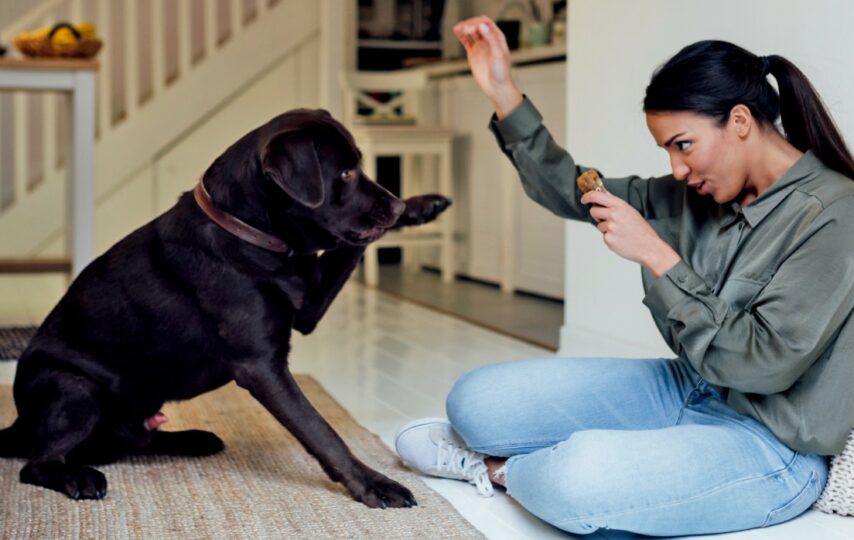When it comes to training dogs, most people instinctively think of obedience commands and punishment-based methods. While this type of training can be effective in some cases, there are other, more effective ways to train your pet. In this blog post, we will explore five such methods that are more humane and effective. By following these tips, you will be able to train your dog in a way that is both rewarding and educational for both you and your pet.
The Importance of Training Your Dog
Training your dog is important for a myriad of reasons. Not only will it help them to learn proper behaviors, but it can also prevent them from doing damage or getting into trouble. Here are five things you should know about dog training in Chapel Hill:
1. Start with simple commands.
If you’re just starting out, begin by Training with basic commands such as sit, stay, come, and down. Once your dog knows these commands, you can add more complicated ones such as “sit,” “down,” “fetch,” and “high-five.”
2. praise and positive reinforcement are key.
Use verbal praise and reinforcement whenever your pet does something you’ve asked them to do (such as responding to a command). This will help them associate good behavior with rewards (positive reinforcement), which will make future tasks easier for them.
3. Establish rules and boundaries early on.
You’ll need to set rules and boundaries for your home in order to keep your dog safe – both physically and emotionally. Have a conversation with your veterinarian about what kinds of rules you want to put in place for your home (keep in mind that some dogs may not be able to handle strict rules).
And remember – even if your dog seems obedient at first glance, they may still get into trouble if they don’t know their boundaries! Be sure to regularly reinforce good behavior so they understand what’s expected of them.
4. punish bad behavior appropriately.
If your dog misbehaves, be sure to punish them in a way that’s effective and appropriate. For example, if they’re barking excessively, you may want to give them a bath or send them outside for a timeout. If they’re destructive, you may want to take away their privileges for a period of time.
5. be consistent with your training.
Make sure to stick to the same training techniques and rules throughout the duration of your pet’s training – this will help them learn what’s expected of them and develop good habits. If you make changes (even small ones), be sure to explain why these changes were made so your dog understands why their actions are being treated the way they are.
How to Train Your Dog the Right Way
There are a few things that every dog owner should know about training their pet. The first thing to keep in mind is that dogs learn best through positive reinforcement. This means rewarding your dog whenever they perform a desired behavior. Another important factor to consider when training your pooch is consistency.
Make sure that you reward your dog for the same behaviors every time, even if it means repeating the process multiple times. Finally, be patient and consistent with your training methods; mistakes are normal for beginning trainers, but always strive to improve. With these tips in mind, you can successfully train your pup!
Positive training methods for dogs
Positive training methods are the best way to train your pet. They work better than punishment and are more likely to be successful. Positive reinforcement is when you give your dog something good, such as a treat, whenever they do something that you want them to do.
Negative reinforcement is when you withhold something good from your dog, such as a treat, whenever they do something that you don’t want them to do. You can use positive methods with any kind of pet, including dogs, cats, horses, and even rabbits. Here are some tips for using positive training methods with your dog:
1. Start small. If you’re new to positive training methods, start by training one small behavior at a time. This will make it easier for you to get your dog’s attention and maintain control over the situation.
2. Be consistent. Make sure that you stick to your training routine no matter what. Your dog will learn much more quickly if they know what’s coming next.
3. Use treats sparingly. Don’t give your dog too many treats – just enough to keep them interested but not so many that they become spoiled or over-indulgent.
4. Be patient. It may take some time for your dog to learn how to respond positively to commands and receive rewards, but patience is key in getting the results that you want!
The importance of consistency when training your dog
Training a dog is an important responsibility that requires consistent effort on the part of both the owner and the dog. When it comes to establishing boundaries and ensuring your dog’s safety, incorporating dog training with invisible fences, like those available from Halo Collar, can be beneficial. Invisible fences provide a reliable and unobtrusive way to contain your dog within a designated area without visible physical barriers. By integrating training techniques with invisible fences, you can effectively teach your dog to recognize boundaries and prevent them from straying. Here are some tips to assist you in successfully training your dog with invisible fences:
1. Start with basic obedience commands. Many dogs have learned some basic obedience commands from their owners in early life and may not require additional training. If your dog does not seem to understand basic commands such as sit, stay, come, and down, begin by teaching these concepts one at a time. Once your dog understands these commands, start expanding his skills to include more complex tasks such as following directions or retrieving objects.
2. Reward good behavior rather than punish bad behavior. Praising your dog for good behavior and giving him treats or toys when he follows instructions will encourage him to repeat those behaviors in the future. Be sure not to overdo it, however; rewarding your dog for every action instead of only for appropriate ones will stunt his development and make it difficult for him to learn proper behaviors.
3. Use positive reinforcement methods whenever possible. Physical punishment can be useful when training puppies or dogs who are unruly or resistant to authority, but it should be used sparingly and only as a last resort. Using physical corrections such as shaking a Puppy or slapping an adult Dog can cause serious damage and should never be done without first trying other forms of discipline such as verbal reprimands or rewards.
4. Establish clear expectations from the beginning. Be sure that you communicate with your dog about what is expected of him both during training sessions and in daily life. This will help ensure that he understands your expectations and responds correctly when asked to do something.
5. Be consistent in your training techniques. Use the same methods and commands throughout the training process, and be patient with your dog. He may not understand everything from the start, but with a little patience and consistency on your part, he will eventually learn how to behave properly.
Conclusion
One of the most important things any dog owner should know is how to train their pet. Training your dog will help keep them safe, under control, and out of trouble. There are a few basic commands that you need to start with in order to get started, and over time you can work on more advanced tricks. By following these simple tips, you’ll be well on your way to having a well-behaved companion at your side!








